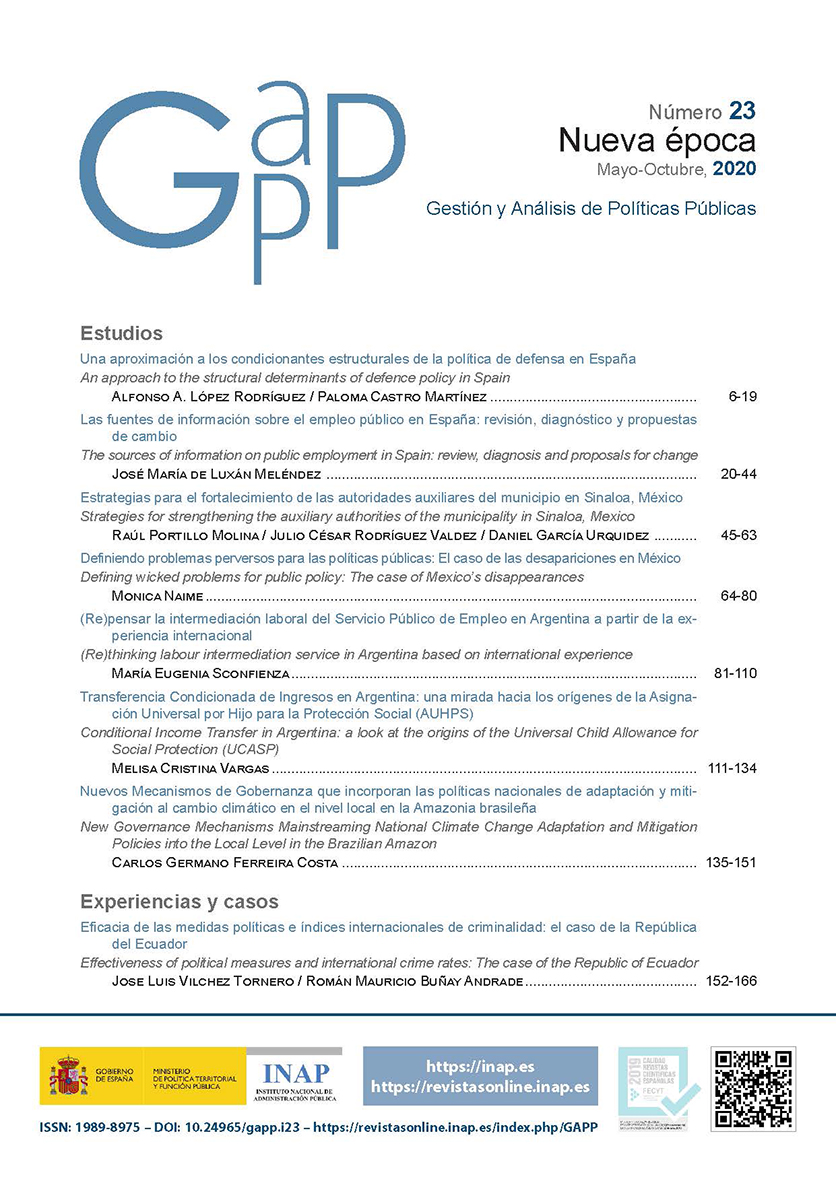Strategies for strengthening the auxiliary authorities of the municipality in Sinaloa, Mexico
DOI:
https://doi.org/10.24965/gapp.i23.10699Keywords:
Municipal strengthening, auxiliary authorities of the municipality, association of municipalities, municipal merger, intermunicipalizationAbstract
The investigation analyzes the lags suffered by the populations that exist within the municipalities in the state of Sinaloa, Mexico, which are largely a product of the centralist government practices of the municipal authorities. Areas of opportunity are shown for the design of public policies that grant them autonomy in political decisions and resource management for the benefit of the inhabitants they legally represent. The research has a quantitative, non-experimental approach, and fits into the exploratory-descriptive modality, using the questionnaire as a technique for collecting structured information with closed questions that was applied to 120 inhabitants using simple random sampling. It is concluded that the association between trade unions, as the first strategy and the merger as the second, would be innovative strategies that could strengthen their management capacity, and it is ruled out that the municipalization of trade unions is the best way forward. The creation of a municipal tax coordination system that promotes the principles of justice and distributive equity among the auxiliary authorities of the municipalities of Sinaloa is also proposed.












